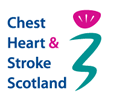- View text alternative
-
Be clear and concise be Specific e.g. “I want to stop smoking”, “I want to lose 8lb”, “I want to be able to walk the dog around the park”
How will the patient/client demonstrate what they’ve achieved. For example - save the money usually spent on buying cigarettes, keep a weight loss diary, gradually increase the length of time or distance the dog is walked can be Measurable
If it can be imagined it can be Achievable but setting smaller goals can lead to attaining larger goals, building self confidence and self belief. For example I will try to find out my quit smoking options first, I will reduce portion sizes, I will walk to the park gates and sit on a bench to rest before attempting to go further.
What identifies a goal as Realistic is a matter of personal relevance for the patient/client, they alone can determine this. The goal needs to be physically, mentally and financially attainable. If the goal is not realistic the patient/client can become frustrated or demoralised if they don’t achieve it.
It is important for goals to be measured in a meaningful and Timely way but should also be realistic. For example - stopping smoking may take longer than losing weight. Walking outdoors might be weather dependent so there needs to be an alternative indoors. Some people may only be able to make one change at a time while others can take on more that one goal.
Goal Setting
A goal can be described as a positive objective your patient or client sets in relation to their health that they want to achieve. Setting goals gives the person something to aim for either short or long term and can keep them motivated to improve their health or lifestyle.
One of the most well know goal setting technique is SMART:
You can assist your patient or client with this process encouraging them to set goals that are:
Specific, Measurable, Achievable, Realistic and Timely.




